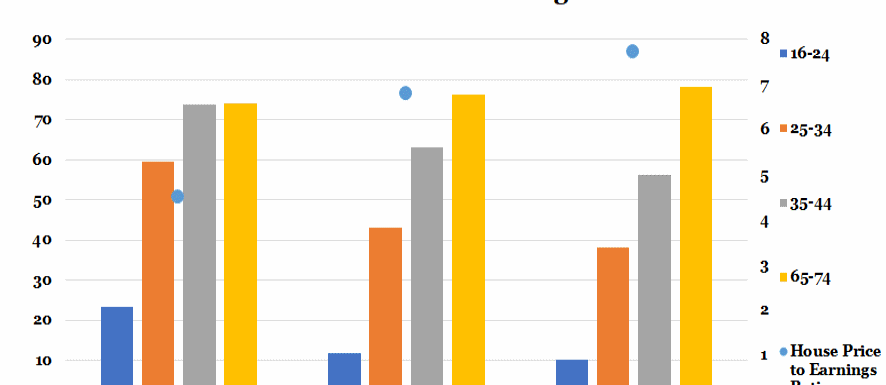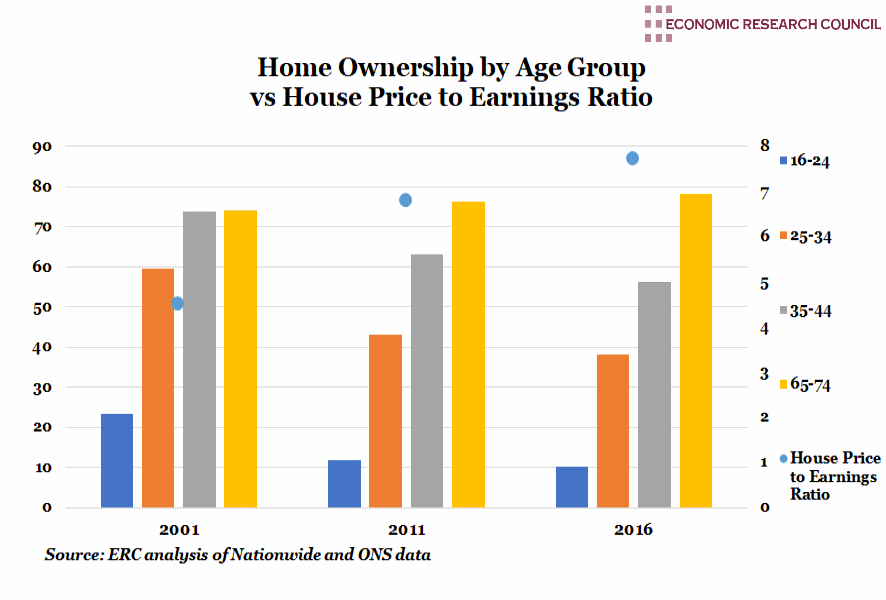Summary
The chart shows the significant decline in home-ownership levels among those under 45 since 2001. The most marked decline (56.4%) has been among the youngest cohort: in 2001 nearly one quarter of 16-24 year-olds owned a home whereas by 2016, this had dropped to just over one in ten.
Levels of home-ownership among 25-34 and 35-44 year-olds has undergone a similar deterioration of 36% and 24% respectively. Only the proportion of home-owners among those aged 65-74 has increased slightly, from 74.2% in 2001 to 78.2% in 2016. The house price to earnings ratio in England has also increased dramatically (from 4.5 to 7.72), a result of the combination of soaring house prices and stagnating wages since the financial crash.
What does the chart show?
The different coloured bars display the percentage of home ownership in different age groups. The blue marker displays the house price to earnings ratio for England in the displayed years. This is calculated by dividing the standardised median house price with median annual earnings using the ONS’ House Price Statistics for Small Areas and the Annual Survey of Hours and Earnings.
Why is the chart interesting?
Workers in 1997 could expect to pay on average 3.6 times their annual salary on the purchase of a home. This more than doubled by 2016, with the average home costing 7.6 times the average annual wage. 2016 marked the fourth consecutive year in which growth in house prices outstripped that of wages. More recently, 2017 average wage growth was 2.4% (although even lower in real terms due to inflation) whereas the average house price rose by 5.2% to £227,00.
Although the picture can be less bleak in certain areas, the snapshot above also disguises areas where affordability is a more extreme challenge. Last year saw the emergence of five London boroughs where houses ‘earned’ more in a year than their owners; most starkly in Barnet, where on average home-owners earned £54.6k net whereas their homes grew in value by nearly £107k.
Only 38% of Baby Boomers inherited wealth from their parents, compared to a projected two thirds of millennials. Although the future transfer of wealth via inheritance could help with the purchase of homes, the average age of inheritance has steadily risen over the last 20 years from 53.8 years of age in 2001 to 56.1 in 2016. At the end of 2017, the Resolution Foundation predicted that half of millennials would be pensioners by the time inheritance was received, although their inheritance tax burden stands to be halved.


